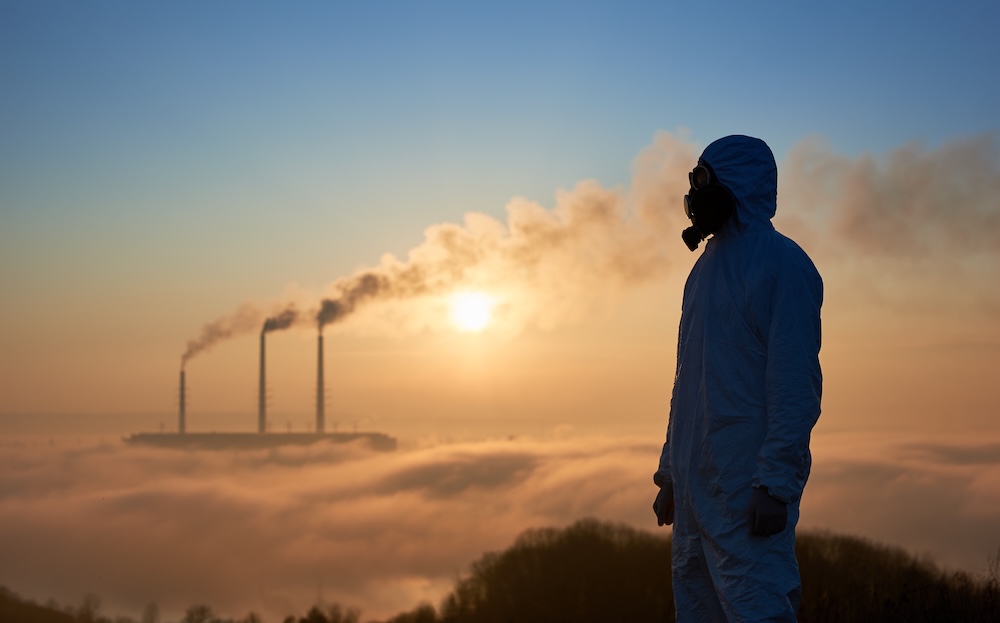What Is Thermal Pollution?
Thermal pollution occurs when a body of water’s temperature is artificially altered, typically by human activity. Most commonly, this means water that has been heated—often during industrial processes—is released into rivers, lakes, or oceans, raising the temperature of the natural water system.
Though it may seem harmless, even small temperature shifts can drastically affect aquatic ecosystems. Thermal pollution is a largely invisible but deeply disruptive form of environmental contamination.
Causes of Thermal Pollution
Industrial Power Plants and Factories
Electric power plants, steel mills, chemical processing facilities, and manufacturing plants often use water from nearby rivers or lakes as a coolant. After absorbing heat from equipment, the warmed water is discharged back into the environment at significantly higher temperatures.
Nuclear Energy Facilities
Nuclear reactors generate large amounts of waste heat. Cooling systems circulate vast quantities of water to regulate core temperature—water that’s later expelled into nearby ecosystems.
Deforestation and Land Clearing
Removing trees and vegetation near water bodies can expose them to more sunlight, raising water temperatures over time. This is especially problematic in shallow rivers and streams.
Urban Runoff
Surfaces like asphalt and concrete absorb heat. During rainstorms, this heat is transferred to runoff that flows into storm drains and eventually into rivers and lakes, elevating local water temperatures.
Reservoirs and Dams
Dams can release water from the surface (warm) or from the bottom (cold), depending on their design. Either can disrupt the thermal balance of downstream ecosystems.
How Thermal Pollution Affects Ecosystems
Aquatic life thrives within narrow temperature ranges. Even a few degrees of change can drastically alter survival, reproduction, and behavior.
Decreased Oxygen Levels
Warmer water holds less dissolved oxygen, which many fish and aquatic organisms depend on. Lower oxygen levels lead to hypoxia, suffocating marine life.
Disruption of Breeding and Migration
Temperature changes can:
- Delay or accelerate breeding cycles
- Disrupt migration patterns
- Harm eggs, larvae, or newly hatched aquatic species
Loss of Biodiversity
Species that are temperature-sensitive may die off or migrate, allowing heat-tolerant invasive species to dominate. This reduces ecosystem balance and food web complexity.
Algal Blooms
Warm water can accelerate the growth of algae, some of which produce harmful toxins. Algal blooms reduce oxygen and block sunlight, creating dead zones in lakes and coastal areas.
Increased Vulnerability to Disease
Higher temperatures can weaken immune systems and increase the growth rate of parasites and pathogens among aquatic species.
Real-World Examples of Thermal Pollution
The Ganges River (India)
Thermal discharge from power plants has altered water temperature, affecting fish populations and contributing to reduced biodiversity.
Great Lakes Region (USA)
Numerous power plants along Lake Michigan and Lake Erie have been cited for high-temperature discharges that impact spawning habitats and aquatic oxygen levels.
Japan’s Coastal Waters
Thermal pollution from nuclear and coal-fired plants has been linked to fish migration changes and loss of local species.
Human Consequences of Thermal Pollution
Impact on Fishing Industries
Fish that are unable to reproduce or are forced to migrate disrupt commercial and subsistence fisheries, leading to economic and food security issues.
Water Quality Degradation
Warmer waters combined with pollution can foster algal blooms that contaminate drinking water and necessitate expensive water treatment.
Coastal Community Vulnerability
Increased water temperature near shorelines can weaken the natural resilience of ecosystems that protect against storms and erosion—such as mangroves and wetlands.
Prevention and Reduction Strategies
Cooling Towers
Instead of discharging heated water directly into waterways, cooling towers allow heat to dissipate into the air before water is released.
Closed-Loop Cooling Systems
These systems recirculate water rather than expelling it, significantly reducing thermal discharge.
Constructed Wetlands
Wetlands can be used to absorb and cool thermal effluent naturally before it enters larger bodies of water.
Regulatory Controls
Environmental agencies can:
- Set temperature discharge limits
- Mandate thermal monitoring systems
- Require environmental impact assessments for industrial water use
Urban Planning Changes
- Incorporate green infrastructure to reduce heat absorption
- Use permeable materials in development to reduce runoff temperature
- Preserve riparian buffers and shade cover around waterways
Common Questions About Thermal Pollution
Is thermal pollution illegal?
In many countries, thermal discharges are regulated. Facilities may need permits and must stay within allowed temperature limits.
How much of a temperature change is harmful?
Even a 2–3°C increase can have major effects on some aquatic species.
Can thermal pollution affect groundwater?
It primarily affects surface water, but long-term warming trends and runoff may impact shallow groundwater in some areas.
Does climate change contribute to thermal pollution?
Yes. Rising air temperatures increase baseline water temperatures, compounding the effects of human-caused thermal discharge.
Are nuclear plants worse than fossil fuel plants for thermal pollution?
Both can have major impacts, but nuclear plants often use more water for cooling and may discharge water at higher temperatures if not managed properly.
Final Thoughts
Thermal pollution is a subtle but significant force reshaping aquatic ecosystems around the world. Often overshadowed by plastic or chemical contamination, it deserves more attention—especially as energy demands and urban heat intensify. The good news? With better regulation, infrastructure, and awareness, thermal pollution is one of the most manageable forms of environmental harm. A future with thriving waterways depends not just on what we put into the water—but how we manage its heat.









Reader Interactions